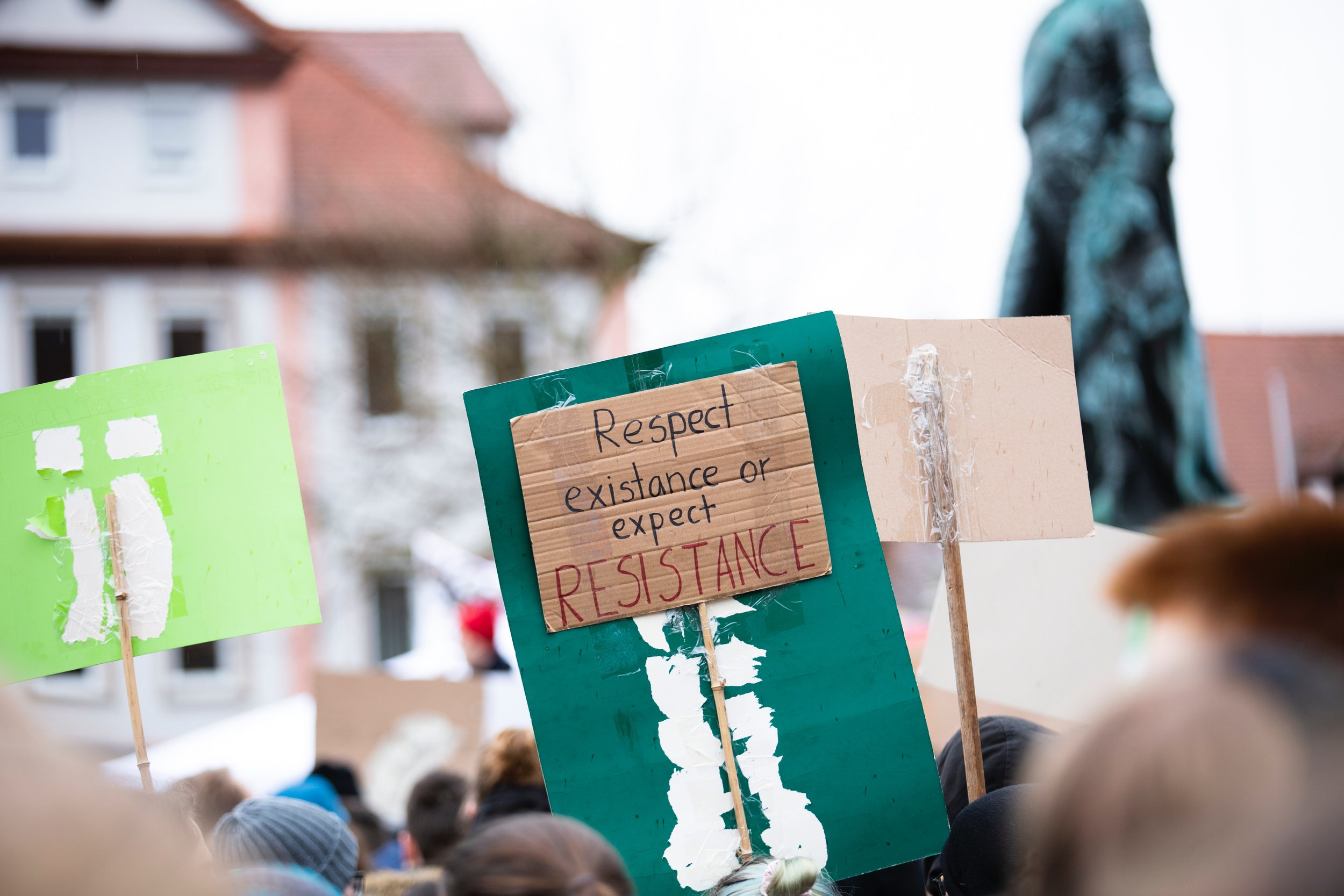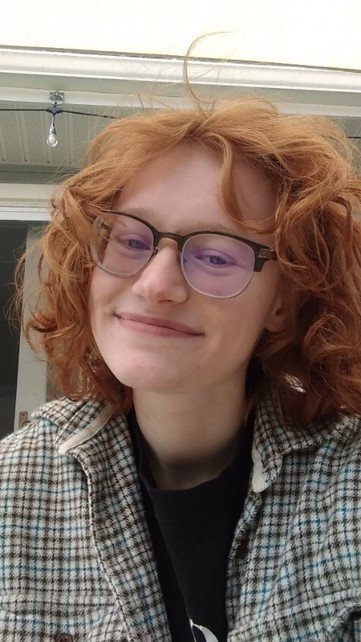Coming Out:
The Lives of Queer, Undocumented Immigrants in America – A Country that Brags Freedom
By Bethany Parker
Importance of Identity
Everybody has their own identity. Whether it’s what they believe, how they grew up, their physical features, or any combination of things, everyone has ways they identify themselves and how others identify them. Identity is one of the most powerful aspects of a person’s life. It determines both how someone interacts with the world and how the world interacts with them. As people develop their sense of self from infancy all the way to the end of their lives, they begin to align themselves with groups of people who share similar identities. Examples of these include race, gender, class, civil status, and many others. While some identities are permanent such as race or ethnicity, others are more fluid and can change as that individual grows older. These are identities such as legal status, gender, sexuality, or class.
When discussing identities, it is important to recognize that, due to the way society has been constructed – especially in the United States - each identity carries different weight. There are differences in the way a cisgender man interacts with the world versus how a transgender man would. Even though cisgender and transgender are just two ways to describe gender, they are treated differently, and the transgender person will often have to deal with more weight in their identity while the cisgender person holds more privilege.
It also cannot be ignored that one person often carries multiple identities and that this affects the way they experience life. For example, one person of color will not have the same experience as another person of color simply because both are non-white. They each have other identities that interact to create an individual navigation of the world for each person. This is the concept of intersectionality.
When a queer undocumented person lives in the United States, they experience the part of them that is queer while also experiencing their identity as undocumented. These identities are inseparable because they are both necessary to create the life of the person with those identities. So then, how does a person balance the two sides of themself? How does someone come out as both queer and undocumented in a country that brags freedom for all but has a mile-long list of exceptions?
Identity and Community
Community is one of the best ways to combat the isolation that can come with having a marginalized identity. According to the UCLA School of Law Williams Institute, there are approximately 289,700 LGBTQ undocumented immigrants living in the United States (Goldberg and Conron). Even though this is a lot of people, some identities, especially ones like being queer or being undocumented, are ones that people feel forced to keep hidden due to societal stigmas and safety reasons. These stigmas try to obligate someone to either label themselves as an “other” by coming out or remain pretending to be someone they are not.
As a country, the United States has created a culture of fear of undocumented immigrants. From the anti-immigrant laws that have been enacted since the founding of the country to the overarching fear of Immigration and Customs Enforcement (henceforth: ICE) deportation, immigrants have been forced to live in fear for their lives and their safety. Due to this well-founded fear of being detained or deported, undocumented immigrants live in what was described by Jose Antonio Vargas, a queer undocumented person living in the United States, in his book Dear America, as “a toxic, abusive, codependent relationship with America” (Vargas 221). He also explains, though, when writing about his decision to “come out” as undocumented, that he had to do it, to tell everyone that he is undocumented. He writes, “To free myself – in fact, to face myself – I had to write my story” (Vargas 113). Vargas expresses the sentiment that is forced upon undocumented people. It is a feeling of loneliness, that they must pretend be someone else to survive because by making them feel that way, society can suppress their power as a united group. When people are forced to hide themselves away, they go through “the daily challenge of ‘feeling ashamed, of feeling little in the world’” (Terriquez et al. 269). This is what allows the oppressors in power to stay in power because the voices of those most affected are separated and silenced. When voices are together as a community, they are much stronger than the voices of individuals.
When discussing intersectionality between identities, there will always be ways in which the identities differ, but those differences are just as important as the similarities. They both are what make a community strong. When it comes to being queer and undocumented, these two identities may not be ones that first come to the minds of most people when thinking about intersectionality within legal status or sexuality and gender but the amount of visibility or representation a group of people has is not a determining factor of that group’s importance or existence (White 991). These two identities that come together to form one group, share a different sort of oppression than each group individually.
Oppression is not equal for everyone. When multiple oppressed identities collide, the oppression builds because of its “interlocking nature” (Gentile and Salerno 209). While the oppression of queer and undocumented people is interconnected, so are their rights. In the documentary Forbidden: Undocumented and Queer in Rural America, Moises Serrano, another person who is both undocumented and queer, explains that when fighting for the rights of undocumented people and of queer people, they must be fought for together because by separating the identities, full equal rights will never be won (Rhynard, et al. 3:45-4:05). Although each identity within the unified group may be affected differently, there are still similarities in the ways in which they are perceived as less than the rest of society.
Overlapping Oppression
In their own ways, both queer people and undocumented people are told they there is something about them that is inherently wrong. For transgender people, the common narrative is that they all were “born in the wrong body” because their sex assigned at birth does not match their gender. They are also often told that for their transness to be valid, they must undergo multiple surgeries until they look “cisgender enough” to be palatable for the rest of society. Transgender people are told that their body is the wrong body for them and that must change themselves to be a “good” transgender person.
For undocumented people, society also tells them that their existence is inherently wrong for simply living in the United States. Their overall personhood is deemed “illegal,” and every move they make is criminalized (White 997). In both cases, people are being told that who they are and how they exist is wrong so when these two identities intersect, there is an additional layer of oppression. Having a community is so important when it comes to intersectionality because it provides the knowledge that each person who is experiencing the dehumanization of themselves coming from society and the systems that were built to uphold oppression, is not alone in that. Having a community of other undocumented queer people provides safety for each other. That is not enough, though. There needs to be change, too.
Change can be difficult to create, especially when the people who need it the most are some of the most ignored and those without as many rights as other people in the country. The biggest changes can occur by starting with smaller ones. In an interview with The Huffington Post, Julio Salgado, who launched the UndocuQueer movement for undocumented queer people in 2013, said, “There’s homophobia within our communities . . . And likewise when you’re in queer spaces, a lot of the times [what’s said is] we should focus on gay marriage, we should focus on joining the military, but we don’t focus on immigration” (Rupersburg). By beginning with community change, there is greater potential for change outside if the community with a unified voice making the call for action. When it comes to change on a larger scale, the functions of society and the government especially need to be examined. In the United States, the culture is very cisheteronormative and this applies to the immigration policies as well.
Photo by Mathias Reding via Pexels
In a report from Human Rights Watch, it was reported that trans women experienced violence at the hands of the men they were in ICE detention centers with even though they were not men and should not have been detained with men (Human Rights Watch). This is just one example of the violence that come from an established cisheteronormative society. Other institutions and policies operate along the expectation that everyone they encounter must be cisgender and heterosexual which then puts the burden of accommodation onto the queer person rather than whatever is actively causing the oppression (Pieri 109). The need for change is shown not only through the expectation of people not being queer but also in the functions of society that ignore undocumented immigrants.
The Need for Legal and Social Advocacy
One of the largest Supreme Court cases in the last decade has been Obergefell v. Hodges, guaranteeing the right for same sex couples to marry anywhere in the country, for the time being. Many queer immigrants move to the United States because of the freedoms surrounding sexual orientation and gender only to realize once they are here that a lot of those freedoms do not apply to them because they are undocumented (Arriola 619). This country brags of all the rights and freedoms it has to offer but does not extend them to those who have the most need. The United States is not a country that offers freedom and rights to those who need them but, rather, a country that withholds and takes away exactly what some people need to survive. Changes need to be made immediately to the way undocumented people are treated here by allowing them the rights they came to this country for.
While change for the better may not be evident in this country, what is evident is the power of the people who need it the most. Undocumented queer immigrants are one such group that has the strength it takes to survive. Each person has experienced both what it is like to be rejected for being queer as well as what it is like to be unaccepted for being undocumented. “Coming out” is an act of bravery and of resistance in terms of both queerness and being undocumented. It takes bravery to be fully seen by the world while it upholds oppressive systems of power. It is resistance to exist and to be seen. For every person that “comes out” and lets people have access to their life, there is another person who is seeing, perhaps for the first time, a person like them and is learning that who they are is okay and can be celebrated. This country has done a lot to oppress queer undocumented people while calling itself “the land of the free and the home of the brave.” While the United States may not offer its freedoms to everyone who lives here, the people with intersecting, oppressed identities, like undocumented queer immigrants, who call this country home, are certainly the brave.
Photo by Markus Spiske via Pexels
About the Author: Bethany Parker
My name is Bethany Parker, and I am an intern at Lighthouse this summer. This is my second semester here and I’m so happy to be back. I am a junior at Ferris State University and am studying Spanish for the Professions and Social Justice. I especially love my discussion-based classes that focus on combating discrimination and oppression because of the many perspectives people share during those discussions. After I graduate from Ferris, I plan to take a few years off to travel and gain experiences from the world to complement my education before returning to school to study law. Law school is currently in my plans as I would love to continue doing the work that I’ve gotten a glimpse of during my time here at Lighthouse. Being an intern who works on both general legal projects as well as with the New Americans Legal Clinic, I’ve gotten the opportunity to see a variety of different types of immigration services as well as have a more hands-on experience with asylum as a specific part of immigration. Outside of work and school, I enjoy spending time with my puppies as well as creating things. No matter if it’s sewing, knitting, crocheting, or embroidering, I love being able to take what started as just a string or piece of fabric and turn it into something completely different. I also spend a lot of time reading about current events as well as past events that impact us today. I like being able to have knowledge of what is happening both in my life and in the lives of people who experience the world differently than I do and an opportunity to learn more is exactly what Lighthouse has given me this summer.
Works Cited
Arriola, Elvia Rosales. “Queer, Undocumented, and Sitting in an Immigration Detention Center: a Post-Obergefell Reflection.” UMKC Law Review, vol. 84, no. 3, Curators of the University of Missouri, 2016, p. 617–.
Gentile, Haley, and Stacy Salerno. “Communicating Intersectionality through Creative Claims Making: The Queer Undocumented Immigrant Project.” Social Identities, vol. 25, no. 2, Routledge, 2019, pp. 207–23, https://doi.org/10.1080/13504630.2017.1376279.
Goldberg, Shoshana K., and Kerith J. Conron. “LGBT Adult Immigrants in the United States.” Williams Institute, UCLA, 23 Feb. 2021, https://williamsinstitute.law.ucla.edu/publications/lgbt-immigrants-in-the-us/.
Human Rights Watch, New York City, NY, 2016, pp. 19–25, “Do You See How Much I’m Suffering Here?”
Pieri, Mara. “Undoing citizenship. Undocumented queer activism and practices of rights.” REMHU: Revista Interdisciplinar da Mobilidade Humana, vol. 24, no. 48, Centro Scalabriniano de Estudos Migratórios, 2016, pp. 105–20, https://doi.org/10.1590/1980-85852503880004808.
Rhynard, Tiffany, et al., directors. Forbidden: Undocumented and Queer in Rural America. Kanopy, Sisters Unite Productions & Pony Pictures, 2016, https://www.kanopy.com/en/ferris/video/306030.
Rupersburg, Nicole. “Queer and Undocumented: The Art and Activism of Coming out, and Coming Out.” Creative Exchange, Springboard for the Arts, 28 June 2019, https://springboardexchange.org/queer-and-undocumented-the-art-and-activism-of-coming-out-and-coming-out/.
Terriquez, Veronica, et al. “Intersectionality as a Multipurpose Collective Action Frame: The Case of the Undocumented Youth Movement.” Ethnicities, vol. 18, no. 2, Apr. 2018, pp. 260–276, doi:10.1177/1468796817752558.
Vargas, Jose Antonio. Dear America: Notes of an Undocumented Citizen. Dey St., an Imprint of William Morrow, 2019.
White, Melissa Autumn. “Documenting the Undocumented: Toward a Queer Politics of No Borders.” Sexualities, vol. 17, no. 8, Dec. 2014, pp. 976–997, doi:10.1177/1363460714552263.




